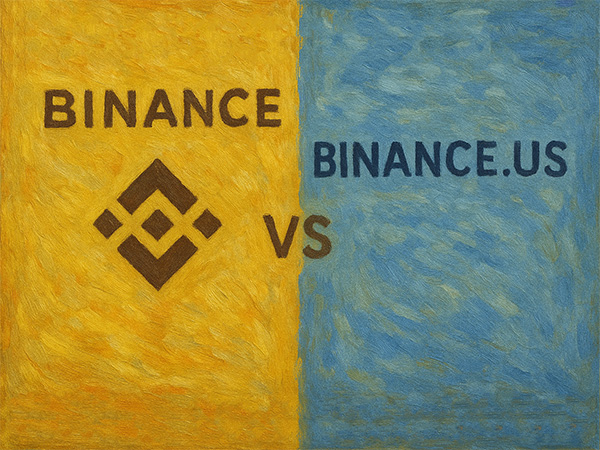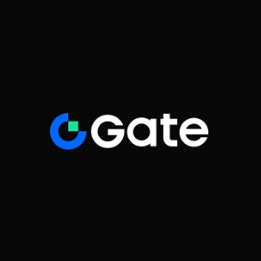Binance vs Binance.US: Which One Is Right for You?

As the world’s largest cryptocurrency exchange, Binance has served users in over 180 countries since 2017, operating through a decentralized model with no official headquarters. Binance.US, launched in 2019 in response to U.S. regulatory pressure, is a compliant entity independently operated by BAM Trading Services based in San Francisco. Though they share the brand name, their ownership structures are distinctly separated—U.S. user assets and data are completely isolated from the global platform, forming a strict regulatory firewall. This setup stems from FinCEN requirements to control cross-border fund flows and ensures that U.S. users’ trading activities are subject to domestic laws.
Tradable Assets and Tools
Binance offers over 350 cryptocurrencies for trading, including futures (up to 125x leverage), options, P2P trading, and a full range of staking services. For instance, during the Solana ecosystem boom in 2025, global users could leverage their positions and participate in token mining.
Binance.US, however, is restricted by SEC regulations and only supports spot trading for around 160 mainstream cryptocurrencies. All derivatives like leverage and options are strictly prohibited. Staking services are limited to a few tokens such as SOL and ADA, with returns approximately 30% lower than those on the global platform. This difference significantly limits U.S. users’ earning potential during bull markets.
Fee Structure and Hidden Costs
| Fee Type | Binance | Binance.US |
|---|---|---|
| Spot Trading Fee | 0.1% (maker/taker) | 0.4% maker / 0.6% taker |
| With BNB Discount | 0.075% | 0.57% (only 5% discount) |
| Fiat Deposit Fee | $0 via bank transfer | 4.5% via debit card |
| BTC Withdrawal Cost | ~$1.5 network fee | ~$4.2 network fee |
Binance.US users pay up to 6 times higher base trading fees than those on Binance. While it advertises "free BTC trading," that only applies to 4 trading pairs (e.g., BTC/USDT), and the hidden cost lies in fiat on-ramps—debit card deposits incur a 4.5% fee, whereas Binance supports free SEPA transfers globally.
Regulatory Restrictions and Regional Access
Binance has obtained licenses in 22 countries, including France and the UAE, but explicitly prohibits access to users from 9 countries, including the U.S. and Iran. Its KYC process is relatively lenient, granting full account access after basic identity verification.
Binance.US, while designed for American users, is actually available in only 34 U.S. states. Residents of New York, Texas, and 6 other states cannot access it due to local regulations. The platform enforces bank-level KYC, requiring ID and proof of address (like utility bills). The process is often delayed by system issues exceeding 48 hours. Notably, when Binance paid a $4.3 billion regulatory fine globally in 2023, Binance.US remained unaffected due to its operational independence, proving the effectiveness of its regulatory isolation model.
Security Mechanisms and User Experience
Binance maintains a $1 billion SAFU (Secure Asset Fund for Users), and 95% of user funds are reportedly stored in cold wallets, with public audits for transparency. The platform offers 24/7 multilingual support, and its mobile app holds a 4.5-star rating globally.
Binance.US has not disclosed the proportion of cold storage and lacks a public emergency fund. Users commonly report verification issues with a 30% failure rate, requiring repeated document uploads. Support is limited to email tickets, with an average 48+ hour response time. Its mobile app rating has dropped to 3.2 stars (2025 iOS App Store data). On liquidity, Binance.US handles less than 1% of Binance’s daily trading volume. A sell order of 10 BTC may cause up to 0.5% slippage.
User Choice Decision Guide
Ultimately, choosing between platforms depends on the trade-off between freedom and compliance:
-
Non-U.S. residents or users in supported countries should choose Binance for lower fees, more tools, and deep liquidity
-
U.S. users in eligible states (e.g., California, Florida) may legally use Binance.US, but must accept higher costs and limited features
-
Those prioritizing strong regulation may consider Coinbase (0.6% fees, licensed in 43 states)
Regulatory experts believe Binance.US’s independent model could become a template for exchanges navigating regional compliance, but its user experience needs urgent improvement. The future of exchange competitiveness lies in balancing regulatory costs with quality of service.
-
Sign Up

OKX
OKX is a leading global digital asset trading platform offering spot and derivatives services for cryptocurrencies.
-
Sign Up

Binance
Binance is one of the world's largest cryptocurrency exchanges, offering spot, futures, staking, and a wide range of digital asset services.
-
Sign Up

Bybit
Bybit is a global cryptocurrency exchange specializing in derivatives, spot trading, and crypto-financial products.
-
Sign Up

Gate.io
Gate.io is a leading crypto exchange offering diverse trading options, low fees, and strong security since 2013.
